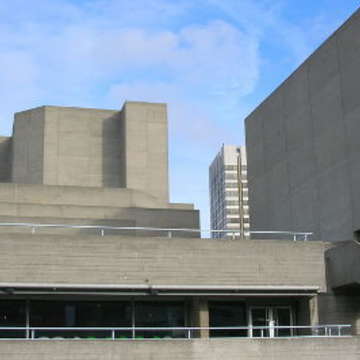https://events.onthewight.com/venues/quay-arts
Sea StreetThis event has now finished
Source http://www.vectisdfas.org.uk/

Vectis Decorative & Fine Arts Society: Doors open at 7.15pm. Tea, coffee and bar are available before the lectures which begin at 8.00pm. We ask you to be seated by 7.55pm. They finish at approximately 9.15-9-30pm Guests are welcome at a cost of £7 and £2 for students.
Architectural Masterpiece or was Prince Charles right after all?
The architecture of the National Theatre on the South Bank of the Thames has appeared twice in a poll of buildings in London – once in the top ten best and once in the top ten worst. Prince Charles described it as a nuclear bunker but was he right? The lecture looks at Denys Lasdun’s life and work but focuses on the National Theatre and pleads for an appreciation of its austere beauty Denys Lasdun is part of the 'third generation' of Modernist architects. He was heavily influenced by the early masters like Le Corbusier, and worked with prominent second generation pioneers Wells Coates and Berthold Lubetkin. After the war his distinctive style and the often large scale of his projects marked him as one of the most visible of Britain's Modernists, a position which made him a target of criticism.
Prince Charles described Lasdun's masterpiece, the Royal National Theatre on the South Bank as "a clever way of building a nuclear power station in the middle of London without anyone objecting".
It is on the South Bank that the distinctiveness of Lasdun's Modernism can best be seen. The National Theatre (the 'Royal' was added later) stands in sharp contrast to its neighbouring, older, monument to British Modernism, the Royal Festival Hall.
Lacking the gentle curves and seductive whiteness of the Festival Hall, the National - opened twenty-five years later - epitomises a harder, more heroic Modernism, perhaps accounting for the mixed reactions it continues to provoke
The Royal National Theatre (generally known as the National Theatre) in London is one of the United Kingdom's three most prominent publicly funded performing arts venues, alongside the Royal Shakespeare Company and the Royal Opera House. Internationally, it is known as the National Theatre of Great Britain.
From its foundation in 1963 until 1976, the company was based at the Old Vic theatre in Waterloo. The current building was designed by architects Sir Denys Lasdun and Peter Softley and structural engineers Flint & Neilland contains three stages, which opened individually between 1976 and 1977. It is located next to the Thames in the South Bank area of central London. In addition to performances at the National Theatre building, the National Theatre company tours productions at theatres across the United Kingdom. Since 1988, the theatre has been permitted to call itself the Royal National Theatre, but the full title is rarely used. The theatre presents a varied programme, including Shakespeare and other international classic drama; and new plays by contemporary playwrights. Each auditorium in the theatre can run up to three shows inrepertoire, thus further widening the number of plays which can be put on during any one season.
In June 2009, the theatre began National Theatre Live (NT Live), a programme of simulcasts of live productions to cinemas, first in the United Kingdom and then internationally. The programme began with a production ofPhèdre, starring Helen Mirren, which was screened live in 70 cinemas across the UK. NT Live productions have since been broadcast to over 700 venues in 22 countries around the world.
The NT had an annual turnover of approximately £54 million in 2008–09, of which earned income made up approximately 54% (34% from ticket sales, and 20% as revenue from the restaurants, bookshops, etc.). Support from Arts Council England and a number of smaller government grants provided 35% of income, and the remaining 11% came from a mixture of companies, individuals, trusts and foundations.
Alan Read Biography
Alan Read holds a masters and a first class honours degree in History of Art from Birkbeck College. Is a gallery guide at Tate Modern, Tate Britain and National Portrait Gallery, and has lectured at the NPG, Penlee House (Penzance), Plymouth City Art Gallery, Croydon Clocktower and the Bridewell Institute. He is also a London Blue Badge Guide and City of London Guide and has conducted walking tours for the Twentieth Century Society, the National Trust and team London Bridge.
Image: Lucy Fisher under CC BY 2.0